Many people associate the idea of feathered dinosaurs with evolution. They presume such fossils show the evolution of feathers from scales over time. However, creation researchers have begun to explore how these animals fit into a biblical perspective of history. In this fifth, and final, part of our series on feathered dinosaurs we will provide a brief look at baraminology and four different dinosaur kinds.
What is Baraminology?
Baraminology is the study of the created kinds. As creationists, we believe that God originally made organisms according to their kinds, anatomically similar groups which could hybridize. Since all of the non-avian feathered dinosaurs are extinct, we can’t apply the criterion of hybridization to them. Instead, we must study their fossils and compare their anatomy.
Statistical Baraminology
Creation scientists have published several different studies beginning to parse out the various created kinds of feathered dinosaurs. To do this, scientists use statistical programs which can sort the dinosaurs into groups based on similarities and differences. If two dinosaurs share a lot of skeletal features in common they will cluster together. Dinosaurs with very different bones will not cluster well. Baraminologists analyze these clusters in an attempt to recognize patterns of continuity and discontinuity. Creatures which form a continuous cluster are likely to be related, and may represent a single created kind. Alternatively, creatures who are discontinuous with each other and cluster in separate groups probably belong in separate kinds.
The data analyzed in baraminological studies often comes from the datasets of phylogenetic studies. Each dataset contains a different set of information; they sample different taxa, and describe different features. No single dataset is perfect or complete. Scientists compare and contrast the results from different datasets to see the larger picture. Evolutionary scientists use this data to create a phylogeny, or branching tree, which they believe shows how the organisms are related to one another. This method assumes that all of the taxa are related to one another and cannot adequately visualize discontinuity.
The Challenges of Fossil Data
One of the challenges of this research is the incompleteness of the fossil record. We know some types of dinosaurs from only a few fragmentary bones. Without a well preserved skeleton, scientists can’t determine all of the features which the dinosaur had. This means we cannot adequately compare all of the taxa. Sometimes a poorly known taxon may need to be removed from an analysis even though it is crucial towards understanding relationships between groups.
Deinonychosauria
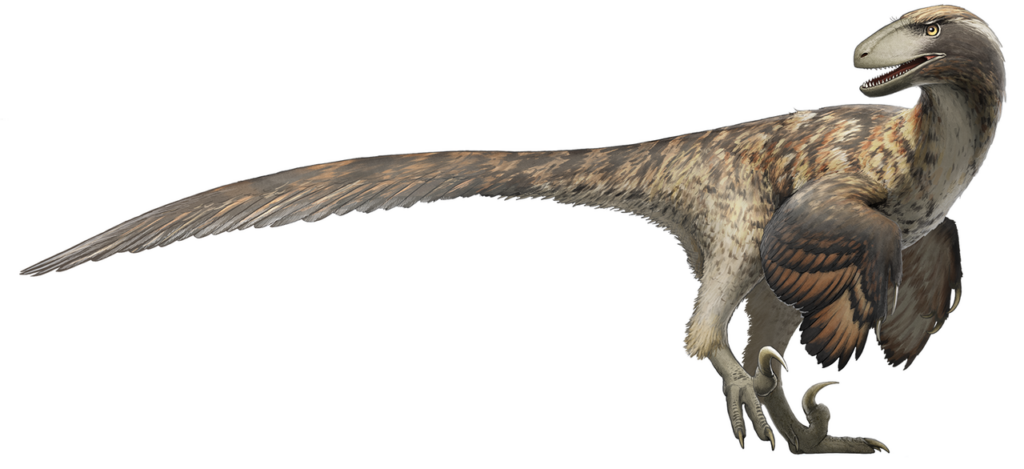
Deinonychosauria was a group of raptors, bipedal carnivorous dinosaurs with sharp curved claws on their feet. One of the most famous of these raptors is Velociraptor, due at least in part to its appearance in the Jurassic Park Franchise. Conventionally, deinonychosaurs are seen as the closest relatives of birds. The two groups are believed to have diverged from a common ancestor during the Jurassic Period.
However, creation researchers have found evidence which suggests that birds do not share common ancestry with deinonychosaurs. Dr. Matt McLain, Matt Petrone, and Matthew Speights published their work on the subject in 2018.1 They found significant positive correlation between the various types of deinonychosaurs. However, they were found to be discontinuous with their supposed relatives, birds.
McLain, et al. suggest that all deinonychosaurs might belong to the same created kind. If correct, this was a remarkably diverse kind. Some members, such as Microraptor were probably gliders, and had long feathers on both their front and hind limbs. Others, like Velociraptor, could run at high speeds along the ground. Some research suggests that the original deinonychosaurs may have been able to fly. This suggests Velociraptor and other terrestrial deinonychosaurs may have been secondarily flightless, having lost the ability to fly.
Oviraptorosauria

Oviraptorosaurs were flightless feathered dinosaurs which had a thick beak and relatively short tail. Like birds, some species had a series of fused bones at the ends of their tails, similar to a pygostyle. Oviraptorosaurs were bipedal, they would’ve walked on their hind limbs. Many had prominent bony crests on their heads.
McLain and his colleagues found that oviraptorosaurs were discontinuous with all of the other taxa in their analyses.2 However, it was unclear whether they were all continuous or not. Some taxa did not correlate with any of the other oviraptorosaurs. There are two plausible explanations for this data. All oviraptorosaurs could be related to one another, or there could be multiple kinds in this group.
Alvarezsauroidea
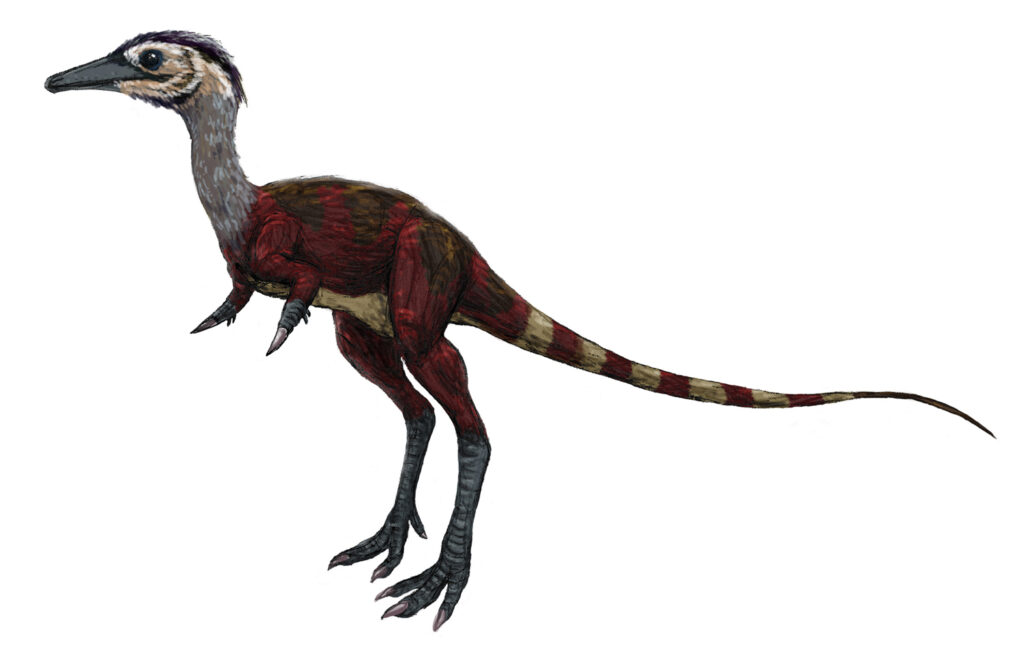
Alvarezsauroids were a group of small bipedal dinosaurs. Although they looked bird-like in some respects, they had a long tail and lots of teeth. Alvarezaurids had unique hands. One of their fingers was very large, while the others were small or absent. It is unclear why they had this strange arrangement, but some scientists interpret it as being useful for digging.
Unfortunately, many of the taxa within Alvarezsauroidea are poorly known. In their research, McLain and his colleagues were only able to compare four of the genera.3 Interestingly, not all of them positively correlated with each other. However, it is unclear whether there is actually a “gap” between them or whether some of the lesser known members of the group bridge this apparent divide. However, the created kind to which these animals belong probably does not include dinosaurs outside of Alvarezsauroidea.
Tyrannosauroidea
Yutyrannus was a nearly thirty-foot long theropod dinosaur. Intriguingly, fossils of this genus show that they were covered in long, filamentous feathers. This makes Yutyrannus the largest dinosaur to have direct evidence of feathers.
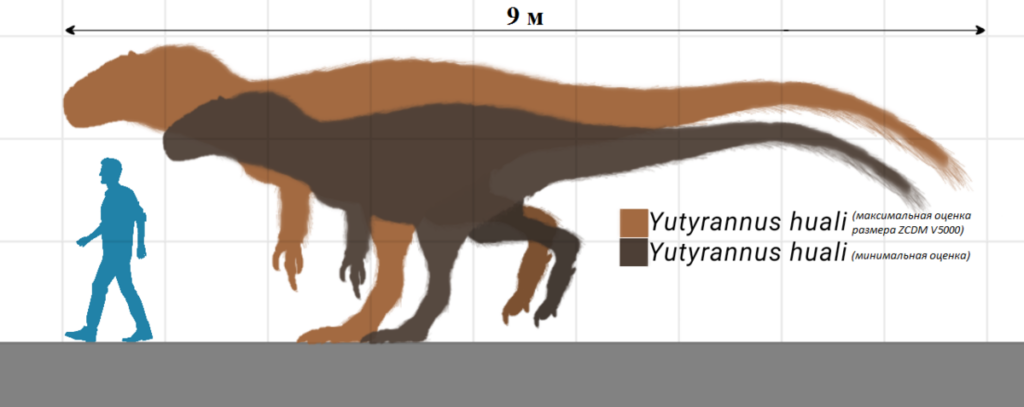
In his study of Tyrannosauroidea, M. Aaron found that Yutyrannus positively correlated with other members of the group Proceratosauridae.4 This taxon is composed of relatively small tyrannosauroids which had a distinctive crest on their nasal bones and a three-fingered hand. With the exception of Yutyrannus, researchers have not yet found other proceratosaurids with feathers. It is, however, likely that at least some had them.
Aaron’s research found that Yutyrannus and other proceratosaurids were discontinuous with tyrannosaurids like T. rex. Although more research is necessary to parse out these relationships, it may be that these dinosaurs belonged in separate created kinds.
Conclusion
We hope this series on feathered dinosaurs has shed light on just how fascinating and complex these creatures are. Although still in its infancy, the study of dinosaur created kinds is beginning to tell us important information. Further research can allow us to determine which dinosaurs are related, what the original members of each created kind would have been like, and how they diversified before the Flood.
It is unfortunate that the debate over feathered dinosaurs has led to division between creationists. As we bring this series to a close, we want to emphasize the points of agreement between the various sides.
These points of agreement are much more important than the issues which divide us. We hope that the study of these dinosaurs will bring creationists together, to a better understanding and appreciation of God’s design in nature.
- We all agree that these dinosaurs, feathered or not, belonged in multiple created kinds.
- These dinosaurs are not the evolutionary cousins or ancestors of modern birds.
- We agree that God created feathers, or the ability to grow them, in the original created kinds, and that they did not develop from scales through evolutionary processes.
Feathered by Design Series
It Started with a Feather? (Part I)
Maws, Claws, and Classification Laws (Part II)
Dino-Birds and Fuzzy Lizards (Part III)
Much Ado About Feathers (Part IV)
Footnotes
- McLain, M.A., M. Petrone, and M. Speights. 2018. “Feathered dinosaurs reconsidered: New insights from baraminology and ethnotaxonomy.” In Proceedings of the Eighth International Conference on Creationism, ed. J.H. Whitmore, pp. 472–515. ↩︎
- McLain, Petrone, and Speights. 2018, 472–515. (Footnote 1) ↩︎
- McLain, Petrone, and Speights. 2018, 472–515. (Footnote 1) ↩︎
- Aaron, M. (2014). “Discerning Tyrants from Usurpers: A Statistical Baraminological Analysis of Tyrannosauroidea Yielding the First Dinosaur Holobaramin.” Answers Research Journal, 7, 463–481. ↩︎

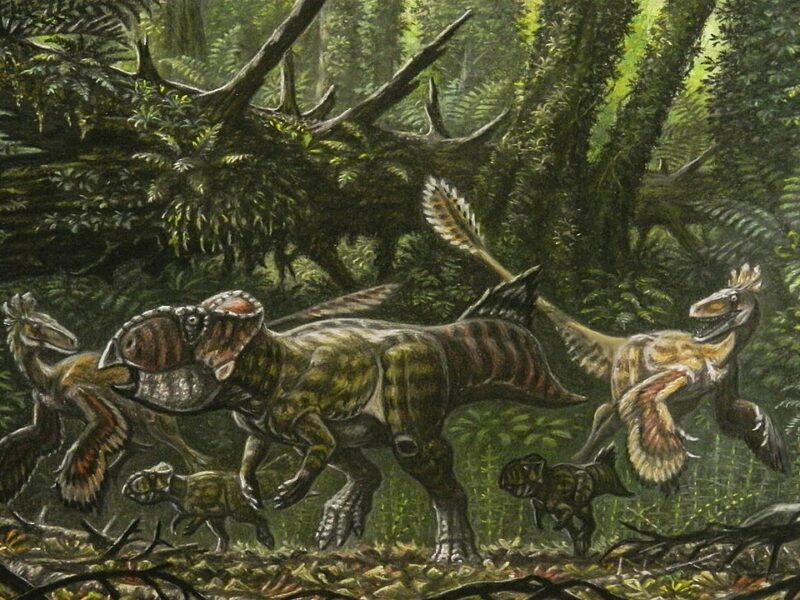





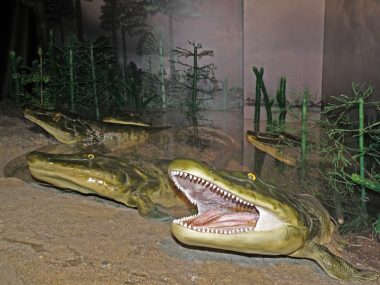




Hi Peter – Like you, I had pretty much concluded that feathered dinosaurs were a reality until I recently started reading Alan Feduccia’s new book, “Romancing The Birds And Dinosaurs.” Alan Feduccia is a famous ornithologist who is also a Darwinist, but he lays out what seem like pretty convincing arguments that all so-called feathered dinosaurs were actually birds, some of which were flightless. Feduccia believes that birds evolved from archosaurs during the Triassic Period, but not from dinosaurs. I would like to see a careful critique of his arguments because they seem convicing, and I always like to weigh the evidence for different positions. Right now, I am undecided on the issue of feathered dinosaurs, and as a creationist, I am willing to go in whatever direction the evidence points. I recommend that you order a copy of “Romancing The Birds And Dinosaurs” to at least engage Feduccia’s arguments.
Hello Peter.
Good article about feathered dinosaurs.
Speaking of dinosaurs, have you thought about writing a post about the evidence for the coexistence of Dinosaurs and humans, answering objections from anti-creationists?
It would be very interesting how they touched on the subject, I read the post on this page about the Cambodian stegosary and it was good.
God bless you!!
Hi Peter,
You write about Oviraptorosaurs and state that:
“Like birds, some species had a series of fused bones at the ends of their tails, called a pygostyle.”
I couldn’t access the original publication(s) but the Wikipedia article on this creature suggests that it was “pygostyle-like” and from the information there is seems not to be very much like a pygostyle.
great series for creationism. the introduction of the likely fact of feathers as a clue is very welcome. i disagree there were dinosaurs and I am confident theropod dinos all were just flightless ground birds in a spectrum of preflood diversity. There is no reason to say god created dinos. instead just kinds and these were misidentified because of lack of imagination in the 1800’s.
Feathers, wishbones, hordes of birdlike traits demands a conclusion or option they were just birds. thus ending the dinosaur myth and its interference with creationism. We should want to beat the others as we know God created kinds and not divisions in biology. Indeed as a poster here mentions Alan Feduciia as a evolutionist realizing flightless birds can account for some theropods. Eventually more will and for all theropods. i predict. We want to beat them. So great series but a wrong final conclusion about theropod dinosaurs being real. Nope.